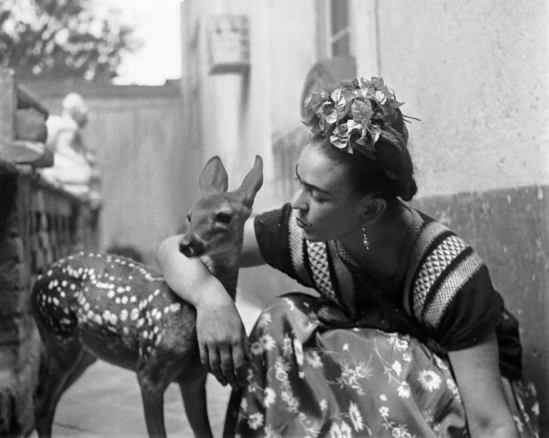
Nickolas Muray Frida with Granizo, 1939 via

Nickolas Muray Frida with Granizo, 1939 via

Horst P. Horst (1906 – 1999) was a German-American fashion photographer. His first exhibition took place at La Plume d’Or in Paris in 1932. It was reviewed by Janet Flanner in The New Yorker, and this review, which appeared after the exhibition ended, made Horst instantly prominent.
Horst made a portrait of Bette Davis the same year, the first in a series of public figures he would photograph during his career. Within two years, he had photographed Noël Coward, Yvonne Printemps, Lisa Fonssagrives, Count Luchino Visconti di Madrone, Duke Fulco di Verdura, Baron Nicolas de Gunzburg, Princess Natalia Pavlovna Paley, Daisy Fellowes, Princess Marina of Greece and Denmark, Cole Porter, Elsa Schiaparelli, and others like Eve Curie.
Horst rented an apartment in New York City in 1937, and while residing there met Coco Chanel, whom Horst called “the queen of the whole thing”. He would photograph her fashions for three decades.

Horst P. Horst, Mainbocher Corset, 1939 via
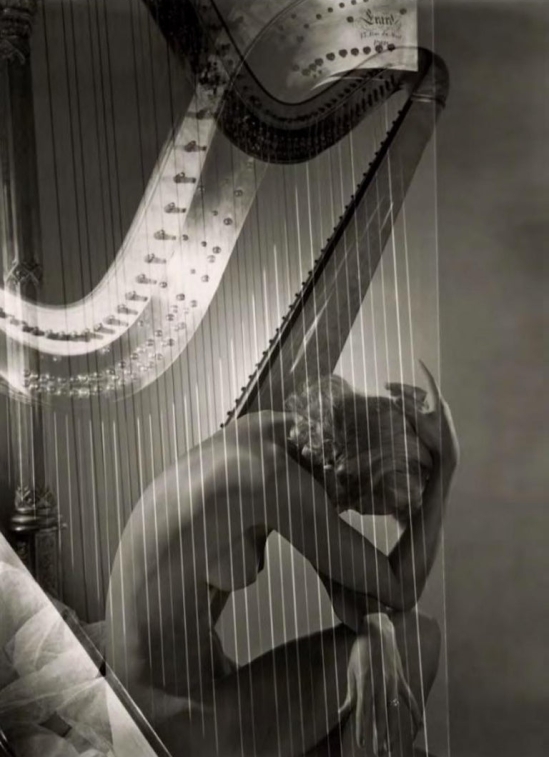
Horst P. Horst Classics, Lisa with Harp, 1939 via

Horst P. Horst Classics, Coco Chanel, Paris, 1937 via

Horst P. Horst Classics, Still Life, 1937 via
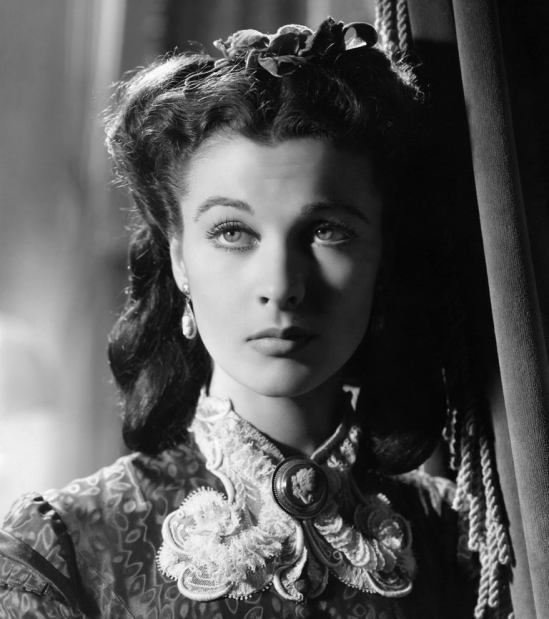
Unknown, Vivien Leigh “Gone with the Wind”, 1939 via
Lucien Lelong (1889 – 1959) was born in Paris as the son of Arthur Lelong, the owner of a textile shop, he trained at the Hautes Etudes de Commerciales in Paris and opened his fashion house in the late 1910s. He was eager to create garments that would highlight the body’s movements and elegance in motion: a kinetic fashion. He killed the 1920s “garçonne” look and privileged fluid garments inspired by neoclassical drapery, and later anticipated the New Look.
Lelong did not actually create the garments that bore his label. “He did not design himself, but worked through his designers,” wrote Christian Dior, who was a member of the Lelong team from 1941 until 1946, during which time he created the collections in collaboration with Pierre Balmain. “Nevertheless,” Dior continued, “in the course of his career as couturier his collections retained a style which was really his own and greatly resembled him.” Other designers who worked for Lelong included Nadine Robinson and Hubert de Givenchy.
Among Lelong’s clients were Marie Duhamel, Jeanne Ternisien (wife of the banker Georges Nelze), the Duchess de la Rochefoucauld, Greta Garbo, Gloria Swanson, Colette, and Rose Kennedy.
On the 10th August 1927 he married his second wife, Princess Natalie Paley (1905–1981), who had worked as a saleswoman in the Lelong perfume department. She was a daughter of Grand Duke Paul Alexandrovich of Russia and his morganatic wife, Olga Karnovich. Paley had starred in a few films, but found her succes being a Lelong model. They divorced in 1937.
Lelong retired in 1952, due to Poor health. Lelong’s third wife, who outlived him, went on to marry the French journalist Maurice Goudeket, the widower of Colette.

Deutsch Photographic Studio, Lucien Lelong Design, 1930s via

Marion Morehouse wearing a Lucien Lelong dress. Vogue, 1925 via

Dress by Lucien Lelong via

Nathalie Paley in a Lucien Lelong dress and evening coat by Dorvyne via

Deutsch Photographic Studio, Lucien Lelong Design, 1930s via

Princess Natalie Paley wearing a black sequined evening gown by Lelong. Photo by Man Ray, 1934 via
Laure Albin Guillot (1879 – 1962) was a French photographer. In addition to portraits of Paris celebrities, she covered a wide variety of genres and had a number of high-ranking positions. A retrospective of her work is being held from 26 February to 12 May 2013 at Jeu de Paume, Paris
Laure Albin Guillot exhibited in the 1920s, adopting a classical approach or French style rather than the avant-garde trends of the day. But it was in the 1930s and 1940s that her work dominated the photographic scene. She covered a variety of genres, everything from portraits and nudes to landscapes, still lifes and, to a lesser extent, journalism. A master of technology, she made use of the very latest methods of image production, perfectly suited to the requirements of publication.

Laure Albin-Guillot Portrait of a Woman, 1930s via

Laure Albin-Guillot Portrait of a Woman, 1930s via

Laure Albin-Guillot Portrait of a Woman, 1930s via

Laure Albin-Guillot Portrait of a Woman, 1930s via
Meret (or Méret) Elisabeth Oppenheim (1913 – 1985) was a German-born Swiss Surrealist artist and photographer. Oppenheim was a member of the Surrealist movement along with André Breton, Luis Buñuel, Max Ernst, and other writers and visual artists. Besides creating art objects, Oppenheim also famously appeared as a model for photographs by Man Ray, most notably a series of nude shots of her interacting with a printing press.

Man Ray, Portrait of Meret Oppenheim, 1933 via
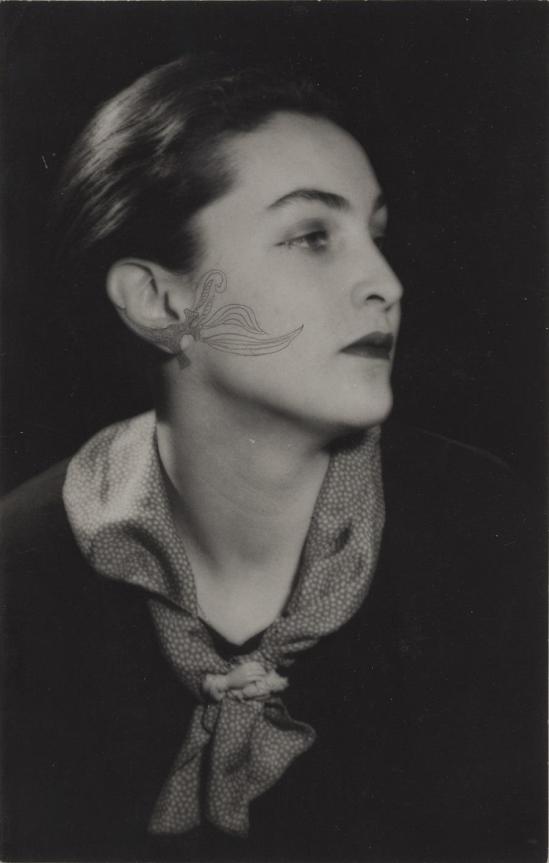
Man Ray, Meret Oppenheim with a drawing by her self, 1936 via

Man Ray, Portrait of Meret Oppenheim, 1934 via
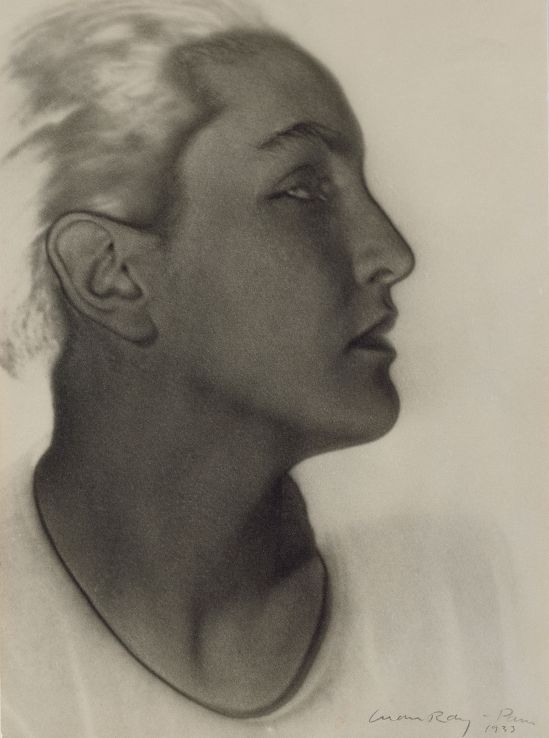
Man Ray, Portrait of Meret Oppenheim, 1933 via

Man Ray, Meret Oppenheim, rue Val de Grâce, Paris, 1933 via

Man Ray, Portrait of Meret Opphenheimer via

Daisy Fellowes by Ilse Bing, 1933 via
Peggy Guggenheim (1898 – 1979) was an American art collector, bohemian and socialite. Born to the wealthy New York City Guggenheim family, she was the daughter of Benjamin Guggenheim, who went down with the Titanic in 1912, and the niece of Solomon R. Guggenheim, who would establish the Solomon R. Guggenheim Foundation.
Peggy Guggenheim created a noted art collection in Europe and America primarily between 1938 and 1946. She exhibited this collection as she built it and, in 1949, settled in Venice, where she lived and exhibited her collection for the rest of her life. The Peggy Guggenheim Collection is a modern art museum on the Grand Canal in Venice, Italy, and is one of the most visited attractions in Venice.



